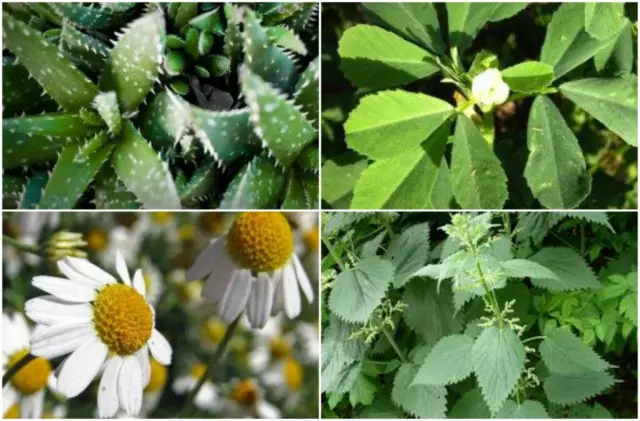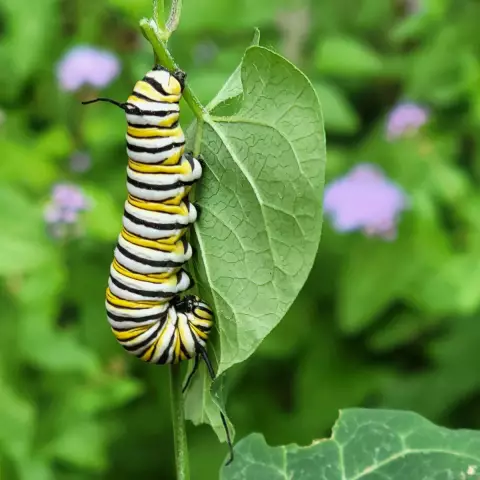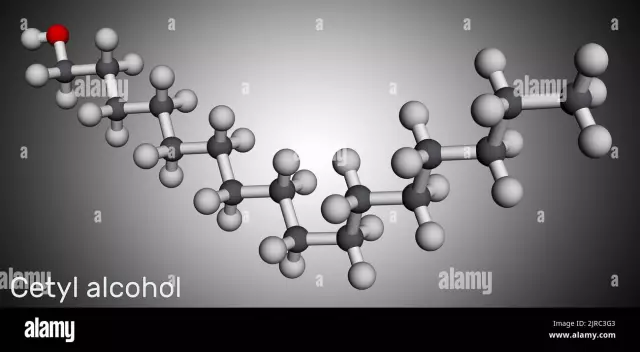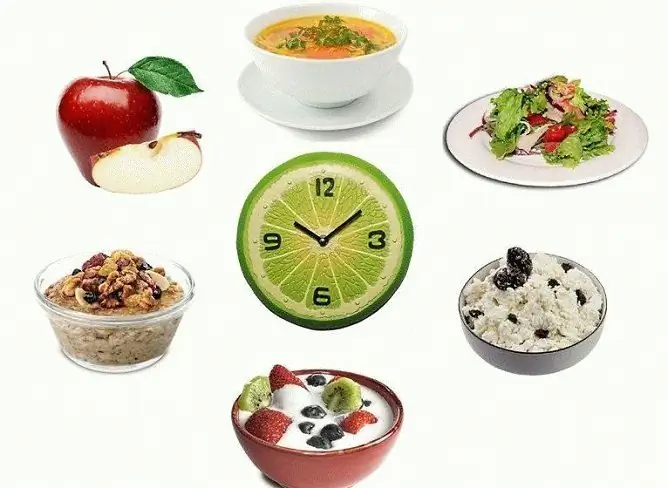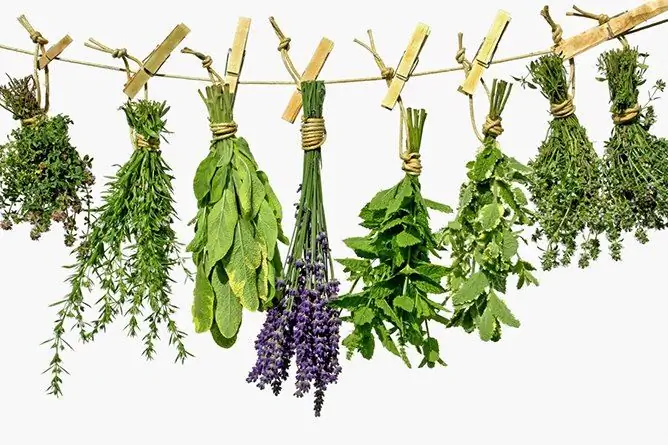- Author Rachel Wainwright [email protected].
- Public 2023-12-15 07:39.
- Last modified 2025-11-02 20:14.
Pharmaceutical garden: medicinal plants that can be grown in the country
The use of medicinal plants in therapy is more relevant today than ever. Medicinal herbs cannot completely replace modern synthetic medicines, but they often become a serious help in alleviating the course of ailments, including chronic ones, and improving the quality of life of patients. Taking into account the continuous rise in the price of pharmaceutical preparations, a huge plus is that everyone is quite capable of not only preparing a herbal decoction or infusion at home, but also growing raw materials for him at their summer cottage.

Source: depositphotos.com
Old acquaintances: tasty and healthy
Almost all vegetable and berry crops traditionally cultivated in home plots have medicinal properties, which gardeners and gardeners sometimes forget about.
- Potatoes. Steam boiled tubers treat catarrhal symptoms. Grated raw potatoes are an excellent remedy for abscesses and burns, it relieves inflammation and swelling from insect bites. Freshly squeezed potato juice lowers blood pressure, helps to normalize bowel function, reduces gastric acidity, and relieves nausea.
- Beet. Juice squeezed from raw or boiled root vegetables is used as nasal drops in the treatment of rhinitis, sinusitis and sinusitis, added to a solution for gargling with sore throat. Mixed with carrot, radish and cabbage juices, beetroot juice is used to treat anemia and stomach diseases.
- Carrot. Root vegetables contain substances that have anti-inflammatory, wound-healing, diuretic, laxative, expectorant and analgesic effects. Decoctions of seeds and tops are used in therapy for diseases of the urinary tract and kidneys, in particular, for urolithiasis.
- Onion and garlic. These vegetables are very widely used in traditional medicine. It is not for nothing that they say that "an onion is a disease of seven." Onions and garlic have a phytoncidal effect. Even an infusion of onion peels is useful - it relieves swelling, is used to prevent diabetes mellitus. Baked onion gruel is an anti-inflammatory agent that is extremely effective in treating abscesses.
- Parsley. All parts of the plant have healing properties. A decoction or juice is used in the treatment of female diseases, for abscesses and insect bites, as well as a diuretic, diaphoretic and antispasmodic. Infusion of roots and herbs treat prostatitis. Parsley is also used in cosmetology - for the purpose of whitening and improving the skin.
- Cabbage. It is used as an anti-ulcer and choleretic agent. Raw leaves are applied to wounds, abscesses, sore joints. Decoction of seeds is used to treat gout.
- Radish. It has a strong bactericidal and antispasmodic effect. It is used in the treatment of diseases of the respiratory tract, liver, and hypertension. Radish juice heals wounds, ulcers and bedsores, with its help they get rid of intestinal parasites. Seed poultices and ointments help with fungal skin lesions and eczema.
Other inhabitants of our gardens also have healing properties: spicy herbs (dill, basil, celery, hyssop, tarragon), nightshade (tomatoes, eggplants, different types of peppers), pumpkins and legumes. Separately, it is worth mentioning plants that are still rarely found in our gardens: Jerusalem artichoke and scorzonera (black sweet root). Their tubers and roots contain a lot of inulin, which is useful for diabetics.
Everyone knows that berries and fruits growing in summer cottages are an irreplaceable source of microelements and vitamins. But the benefits that can be obtained from such plants are not limited to this. For example, the leaves of garden strawberries and berry bushes (raspberries, currants) can be used in the treatment of bleeding, colds, diseases of the gastrointestinal tract, hypertension, skin and many other diseases. Hawthorn and rose hips are more often grown as ornamental shrubs, but their fruits are excellent vitamin and medicinal raw materials. The berries of mountain ash (red and black-fruited) and bird cherry have healing properties.

Source: depositphotos.com
What we admire, so we are treated
Of the beautifully flowering plants with medicinal properties, in our gardens, perhaps only calendula and peony are quite widely known. However, there are much more flowers that are able not only to please with their beauty, but also to give healing raw materials. Irises, tulips, daffodils, primroses, Vittrock violets (pansies), cornflowers, goldenrod, uvularia, ranks, badans, marigolds, delphiniums, gladioli, chamomiles, amaranths, comfrey and many other flowers popular among gardeners will help to cope with various ailments.
Until recently, such well-known medicinal plants as lemon balm, catnip, sage, oregano, thyme, valerian, loosestrife, yarrow, St. John's wort, lavender, Dubrovnik, motherwort, were very rare in their summer cottages: it was not easy to get planting material. Today, their seeds are sold in specialized stores; anyone can grow these herbs in their garden. Most of the medicinal plants are highly decorative and have a pleasant smell and will be a decoration of the garden.
Rules for the cultivation and use of medicinal plants
The idea of independently providing their family with medicinal plant materials is very attractive, but gardeners should not forget that the use of medicinal herbs can have side effects. What does it take to avoid trouble?
- The area where medicinal plants are supposed to be grown must be environmentally friendly. This means that the use of chemicals in the country will have to be minimized.
- Harvesting of plant materials must be carried out within strictly defined terms. In addition, proper processing (washing, cutting, drying) of flowers, grass, leaves and rhizomes is of great importance. If the technology for preparing raw materials is not followed, the effect of it will significantly decrease.
- Preparation of decoctions, infusions, ointments from plant materials requires careful adherence to recipes. If the proportions, boiling or infusion time, and other conditions are not observed, the drugs may not work as expected.
- Herbal treatment often causes allergic reactions. In addition, it is almost impossible to provide an accurate dosage of active ingredients when self-preparing drugs. Therefore, it makes sense to start by taking small portions of decoctions and infusions in order to avoid side effects.

Source: depositphotos.com
Preparations made from herbal raw materials are the same medicines as the rest. They should be used with caution, taking into account all contraindications. It is clear that such treatment can only be started with the approval of the doctor: he must assess the patient's condition and decide whether the "herbal" therapy is compatible with traditional medicines that have already been prescribed.
YouTube video related to the article:

Maria Kulkes Medical journalist About the author
Education: First Moscow State Medical University named after I. M. Sechenov, specialty "General Medicine".
Found a mistake in the text? Select it and press Ctrl + Enter.

